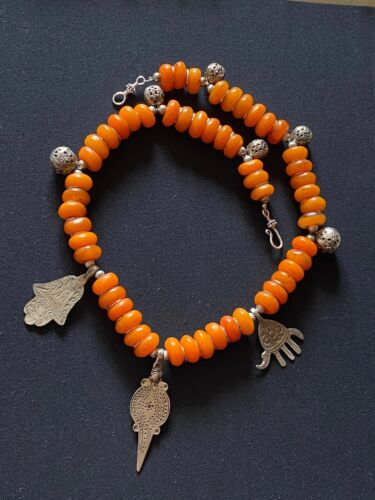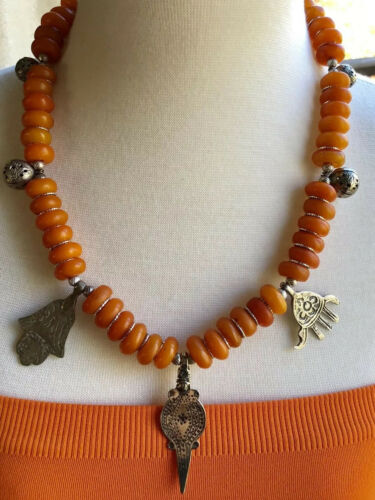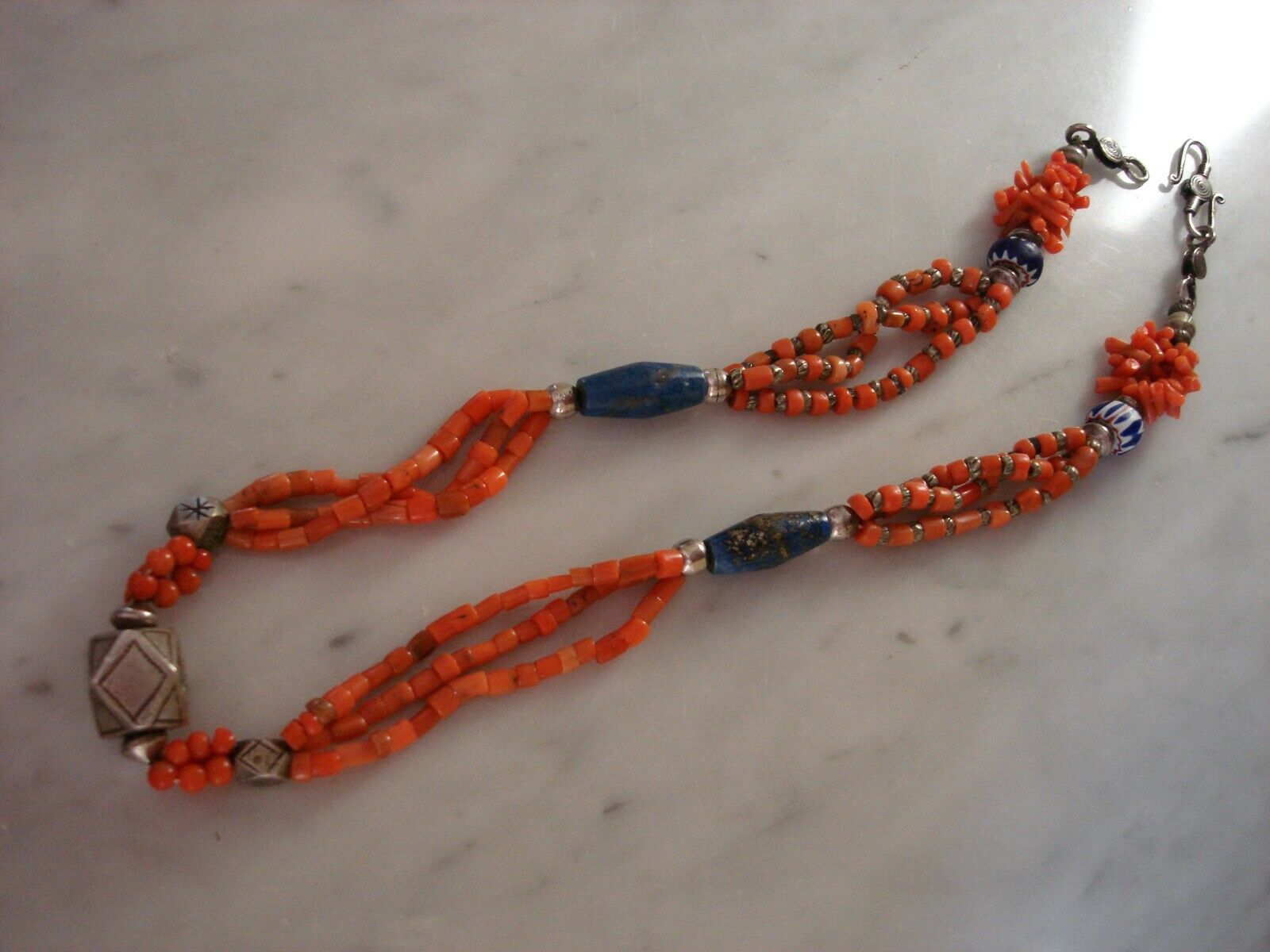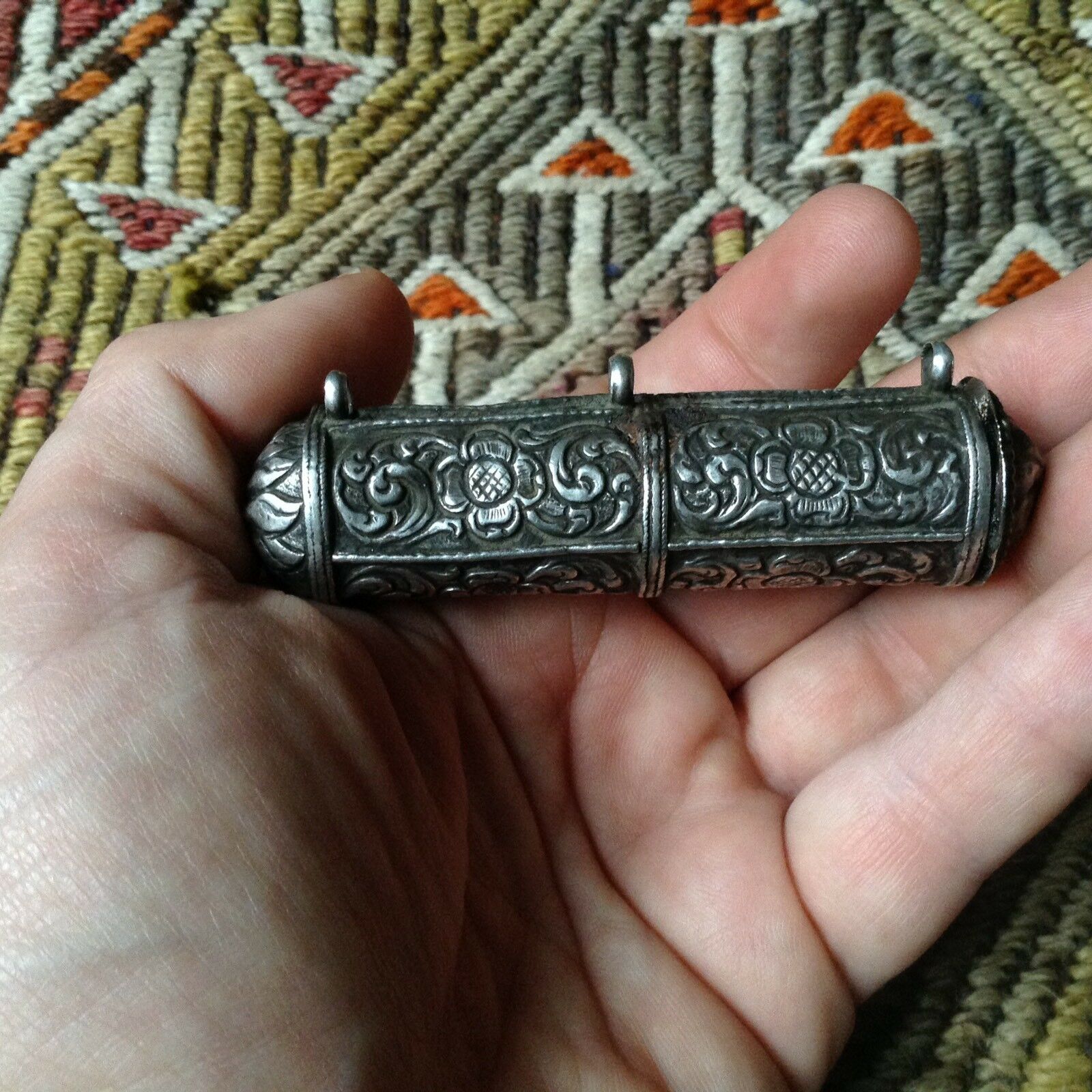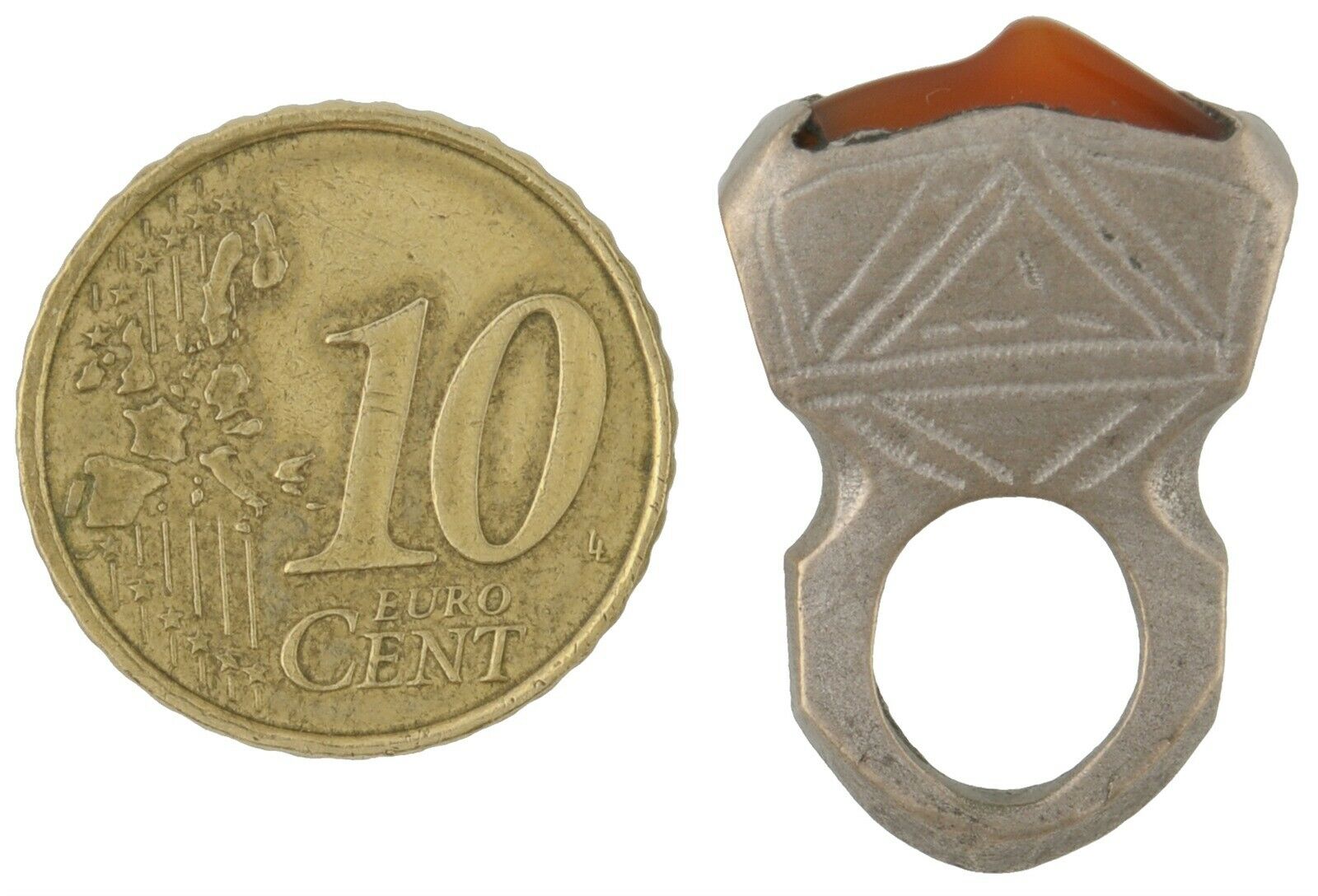-40%
Berber Tuareg Amazigh Moroccan Handmade vintage charm & Resin amber necklace.
$ 98.73
- Description
- Size Guide
Description
MorrocanRepousse
Tuareg Berber tiznit Amazigh Ethnic North African handmade Morrocan silver Ethnic charms and resin Amber. This is handmade Morrocan faux Amber.
A vintage Morrocan silver khamsa Hamsa Hand Of Fatima measuring almost 2” in height by 1” in width. The
repousse “ Rabouz” in the center
measures
2.5”
in height including the bail and .75” in width. The smaller Tuareg k
hamsa hamsa Hans Of Fatima
measures 1.
50”
by 1
.25”
in width.
The two silver filigree balls measure approximately 16mm and the 2 smaller version measure approximately 12mm and have intricate filigree carving details.
The resin honey amber beads measure Approximately 15mm
.
There are several Morrocan silver and Morrocan silver swirl disks spacers.
This necklace has a bohemian style Morrocan silver hook closure clasp.
The total length of this necklace is 2
3”
.
Berbers are the indigenous ethnic group of North Africa. They are continuously distributed from the Atlantic to the Siwa oasis in Egypt, and from the Mediterranean to the Niger River.The name Berber appeared for the first time after the end of the Roman Empire. Many Berbers call themselves some variant of the word imazighen (singular: Amazigh), possibly meaning “free people” or “free and noble men”. Today, most Berber-speaking people live in Morocco and Algeria.
The Berbers or Imazighen (‘Free people’; plural of Amazigh) are the original inhabitants of North Africa. They speak a number of related languages and share a common cultural heritage. Most Berbers nowadays live in Morocco, Algeria, Tunisia, Libya, Mali, Mauritania and Niger.
In Berber culture, jewelry has a symbolic and mythical meaning besides their practical and ornamental function, as they are used as charms and talismans to protect against evil spirits and influences. In addition, acquiring jewelry has an economic meaning. An Amazigh woman’s jewelry is her private property. She may buy, and then later sell jewelry to support her family in dire economic times. With the money she might also buy cattle or land. Smart commercial use makes women apt family bankers.
Berbers call themselves some variant of the word i-Mazigh-en (singular: a-Mazigh), possibly meaning "free people" or "noble men". The name probably had its ancient parallel in the Roman and Greek names for Berbers, Mazices.
The berber language (Tamazight) is one of the oldest languages of humanity. Nowadays, it is spoken by the people of North Africa , Egyptian oasis of Siwa and the Touaregs in the Sahara (desert).
From Central Atlas Tamazight
ⴰⵎⴰⵣⵉⵖ
(amaziɣ). From the active participle
ⴰⵎ
(am) and
ⴰⵣⵉⵖ
(aziɣ), whose meaning is unknown but is possibly related to "aze" ("to be strong" in Taznatit), or perhaps "jeɣeɣ" ("to be brave" in Tamasheq); z and j frequently swap out in The Berber are the indigenous people of North Africa, west of the Nile Valley. Many Berbers call themselves some variant of the word Imazighen(singular: Amazigh), possibly meaning "free people" or "free and noble men". The word has probably an ancient parallel in the Roman name for some of the Berber, "Mazices".
The name Berber comes from the name given to this people by the Romans, meaning barbarians. The history of the Berber people in northern Africa is both extensive and diverse. Their oldest ancestors settled in the East of Egypt.
The Khamsa, Hamsa or Hand Of Fatima is an ancient Middle Eastern amulet symbolizing the Hand of God. In all faiths it is a protective sign. It brings its owner happiness, luck, health, and good fortune. The Khamsa hand has a wide variety of different spellings which includes hamesh, hamsa, chamsa, and khamsa and hand of Fatima.
Berber signs
The ancient Berber script, Tifinagh, was developed around 500 BC, from the Pheonicians.
The Symbol represents Freedom seen by the Imazighen of North Africa. It was used in the war as a weapon and also represents the last letter 'Z' of the Tifinagh Alphabet. It is aslo called the AZA sign of the Imazighen people used in the middle of the Amazigh flag.
Berber flag
The flag is composed of blue, green, and yellow horizontal bands of the same height, and a Tifinagh letter yaz or aza.
Each color corresponds to an aspect of Tamazgha, the territory inhabited by Berbers in North Africa:
blue represents the Mediterranean Sea and the Atlantic Ocean;
green represents nature and the green mountains;
yellow represents the sands of the Sahara Desert.
The yaz symbolizes the "free man", which is the meaning of the Berber word amazigh, the Berbers' own name for themselves. It is in red, the color of life, and also the color of resistance.
The Berber flag thus symbolizes the entire Amazigh people, living in harmony with their land, Tamazgha.
